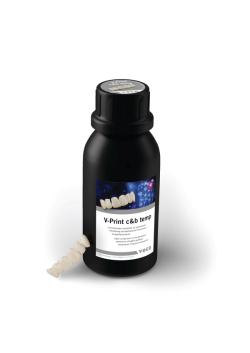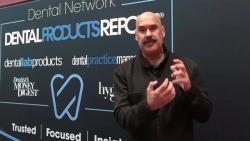- About Us
- Advertise
- Editorial
- Contact Us
- Terms and Conditions
- Privacy Policy
- Do Not Sell My Personal Information
© 2025 MJH Life Sciences™ and Dental Products Report. All rights reserved.
Virtual Education, Technology Helping Dentistry Finish 2020 On High Note
CAD/CAM pioneer Michael Skramstad, DDS, taking advantage of technologies, new educational platforms to make the most of a year that was hit with a pandemic.
A lot has changed in 2020, and much of the change came about due to the coronavirus 2019 disease (COVID-19). The pandemic temporarily closed most dental practices last spring and has pretty much postponed any and every in-person trade show and continuing education gatherings.
But dental care and dental education has rebounded impressively. Dr. Michael Skramstad, who has a practice in Orono, Minnesota, exemplifies just how well the industry has pivoted this year and just how much can be achieved even during a pandemic.
Dr Skramstad is a Beta tester for Dentsply Sirona, focusing on the production of digital restorations, as well as a certified advanced CEREC trainer who has lectured internationally on technology and digital dentistry.
Last month—during Dentsply Sirona World’s virtual event—he sat down with Dental Products Report to discuss how his practice continues to thrive, how CAD/CAM dentistry may prove to be more important than ever after COVID-19, and how it’s critical that dentists continue learning and teaching one another even if face-to-face lectures and demonstrations are on hold.
When his practice was forced to close for all non-emergency procedures in the spring, Dr Skramstad used the time wisely.
“I think the biggest thing was, it was two months where we were doing nothing, where we're off. I think everybody was kind of in that same boat,” he says. “And you can do one or two things. You can just totally take a vacation. Or most of us kind of obsessed about everything and we're reading articles and trying to scrounge together as much as we can find just preparing for the unknown. We had no idea.”
Determined to learn all he could and to be as ready as ever for when dental practices were allowed to reopen, Dr Skramstad went to his office almost every day. There were the one or two emergencies that might pop up, but mostly he was just trying to prepare and to read and figure out what the environment was going to be like.
“I think that I was not alone. Many dentists were doing this just because we all wanted to be prepared for when that did come to an end when the governor said, ‘Okay, now's the day that you can open’. We wanted to be ready. Everybody was ready to open, both mentally and probably financially.”
Finding some good
Technology has allowed the industry to communicate and to educate even while not meeting fact to face. Video interviews and teledentistry have expanded the roles in which non-traditional education and patient visits played during the pandemic and will most surely continue even post COVID-19.
“Everybody has kind of a to do list of things that they want to learn,” Dr. Skramstad says. “You know, videos they want to watch and courses they want to take it. You know, that's one huge benefit is it [the shutdown] allowed everybody including me, to kind of get on that to do list and figure out what I want to learn for the year. In the past I just simply don't have time to learn it. Well, now's that time. We all had things that we were itching to learn and we just know time is hard to come by sometimes.”
So this year there was an explosion of webinars available to clinicians looking to learn new procedures, or financial advice, or how to secure PPE or plan for an overabundance of patients looking to return after the shutdown.
“We joke about the webinar fatigue there was almost too much at some point so we kind of changed up to, to make our videos like smaller segments a little bit easier to bite off but it was yeah it was great for from an education perspective and I think a lot of people learned a lot.”
Another benefit from virtual lectures and demonstrations is that they often are available on demand to allow participants to view multiple times and to rewatch only certain sections if need be. Dr Skramstad is one of the clinicians who provided lectures as well as a live surgical presentation during Dentsply Sirona World, which was themed Healthy Practices, Healthy Smiles.
“Dentsply Sirona World's a perfect example of how it almost is better [virtually] in some senses,” he explains. “You know when you go to these trade shows, everybody's got the things that they want to do, the list of courses they might want to take but there's only so much time and there's only so many places you can be at once. For me, generally at those shows I'm so busy I didn't have an opportunity to go to many courses. But this year, just because it's all online, I've been watching actually quite a few and yeah kind of noticing some things and learning some things, listening to some speakers I've always wanted to hear.”
Sure, many of us miss the social gatherings at a trade show in Las Vegas or Chicago or wherever, but 2020 did provide some opportunities for even more education.
“From a purely educational standpoint, this might actually be better,” Skramstad says. “I just pause [a virtual course], you know, take a little note and watch again. We're not in Vegas, we're not shaking hands and seeing each other face to face, but there's a lot of good opportunities to learn a lot.”
Digital Dentistry
Dr Skramstad has been using CAD/CAM for almost two decades and he is a faculty member of the CAD/CAM Department at the Spear Education Center for Dentistry in Scottsdale, Arizona, and www.cdocs.com, a nationally renowned website for continuing education in CEREC dentistry.
He’s been using Dentsply Sirona products for digital dentistry for many years and has witnessed some big evolutions in the CEREC technology and with same-day dentistry. Intraoral scanners have gotten so much faster and more accurate, and CAD/CAM materials and milling capabilities have improved drastically since their inception. Education, again, has played a key role in these developments.
“It's been an interesting journey for sure because when we first started there was really not a whole lot out there for education,” he says. “You just had you, had the hardware and you figured out how to make it work. You really worked hard and studied hard and talked to the small community of people that were using it to try to figure out how to use it.”
That has changed quite a bit over the years. The technology and the education have improved to the point where the results are far superior and it’s much easier for clinicians to learn to master.
“I think the biggest difference was with the hardware we're currently using,” Dr Skramstad says. “The other side of single-visit dentistry was that it's just really increased the efficiency so much it's almost just an autopilot in the sense that anybody can scan and know how to use it. The software is so predictable.”
With the latest evolutions—the Primescan intraoral scanner and the CEREC Primemill milling unit—chairside CAD/CAM is far faster and better than it was just a few years ago.
“This year brought the CEREC Primemill which was an unbelievable change in the sense that, you know, I don't have time to drink a cup of coffee, it’s so fast,” he says. “So, by far the biggest thing that changed was the overall efficiency of the appointment from 10 years ago to now.”
Many patients have liked the idea of not needing to return for multiple visits to complete their case. Now, during a pandemic, this may be of greater benefit than before.
“With same day dentistry, there's built in benefits of patients not having to go back to the office as often, and they want to get more stuff done more quickly,” he says. “That's a benefit in itself but maybe even more so now than ever. After the shutdowns, people wanted to come back in, but that being said, they don't really want to spend a whole lot of time there, they don't want to come more than once.”
Dr Skramstad and other instructors may very well return to in-person lectures at some point in 2021—fingers crossed—as well as teach at the Dentsply Sirona facilities, but in the meantime, there are many opportunities to learn and share ideas with clinicians around the globe thanks to today’s technologies.
“But the world is going to be different and we all kind of evolve,” he adds. “I think maybe a combination of the two [live and virtual education] is going to be the right answer down the road. We're all looking forward for this sense of normalcy. It sounds like it's moving. Hopefully we’re on the right track and that we’ll be back to normal sometime next year. Fingers crossed.”



